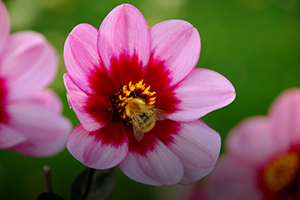Pollinator Drones
 As we continue to struggle with the dwindling populations of natural pollinators all over the globe, scientists are looking to robotics for potential solutions. One idea that has received a lot of attention is the use of drones to supplement the role of bees, and the development of a novel adhesive gel could be a step toward making drone pollinators a practical reality.
As we continue to struggle with the dwindling populations of natural pollinators all over the globe, scientists are looking to robotics for potential solutions. One idea that has received a lot of attention is the use of drones to supplement the role of bees, and the development of a novel adhesive gel could be a step toward making drone pollinators a practical reality.
The new goo is designed to collect pollen grains and redeposit them on contact. Although it sounds simple, several factors need to be considered. First of all, the gel has to be water resistant and durable but soft enough to avoid damaging tender blossoms. It must be tacky enough to pick up the fine pollen grains but not so sticky that it can’t easily release them. And, finally, it needs to be biodegradable.
What Japanese researchers came up with is an ionic liquid gel, which was deployed by spreading it on animal hair glued to the bottom of a two-inch F-Force PXY CAM drone with remote control. In preliminary testing, it was shown to effectively collect and release pollen from flowers simply by bumping into them. The next step is to make the mechanical pollinators autonomous.
Skeptics point out that this solution is specifically targeted toward honeybees, which represent only one of 200,000 species of pollinators that support our food supply. They also argue that it may be more cost effective in the long run to seek out better ways of preserving the pollinator population than to plan for its demise. Food for thought…
For information: Eijiro Miyako, National Institute of Advanced Science and Technology, 1-1-1 Higashi, Tsukuba, Ibaraki 305-8565, Japan; phone: +81-29-861-2130; email: e-miyako@aist.go.jp; website: http://www.aist.go.jp/index_en.html